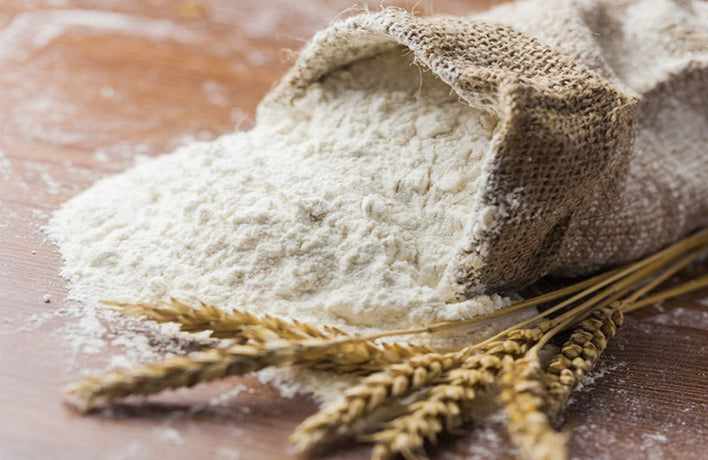- No products in the cart.
Is “Fresh Chakki Atta” a marketing ploy?
06
Feb
Is “Fresh Chakki Atta” a marketing ploy?
Intuitively, most of us believe fresh is better. We all agree that a vegetable picked from the kitchen garden tastes better than one bought from the store, which was probably picked a week ago. But does flour milled a few hours ago taste better than that was milled a few days ago, assuming it hasn’t begun to go dry/ stale? In other words, do phrases like, “fresh chakki atta” or “freshly based bread” mean anything? Let’s check out this concept of ‘fresh’ and when does a food, such as flour, start to loose its freshness.
There are 2 terms that we have mixed up in framing our hypothesis – freshness and taste. I’ll address these one by one.
Taste, more of a psychological construct, is a combination of flavor, texture and smell. Any compromise of these will reduce the experience of eating said food. Older food has a less desirable texture usually from moisture loss. The smells are over time expelled from the food and depleted. Flavor will usually reduce as the different elements, which create the flavor decay or evaporate.
Freshness is more scientifically discussed in terms of presence of nutrients or lack of it. To understand freshness in relation to flour, let’s start with the wheat grain.
A wheat grain is made up of 3 parts – the Bran, the Endosperm and the Germ (see the figure below) and each part is chock full of bioavailable nutrients such as fibre, carbohydrates, minerals, vitamins and proteins.
Figure 1: Source, Precision Nutrition
Once plucked from the stalk and de hulled the whole grain is fairly stable and usually doesn’t spoil. As a seed, they’re naturally designed to be okay at least until next year’s planting and usually well beyond for the proliferation of the species.
However, when the grain is milled, the protective coating (the Bran) is smashed and once the sensitive insides are exposed to air, heat and light, it changes everything.
Most minerals, select proteins and fibre in the whole-wheat flour remain bioavailable even after processing; the vitamins and few proteins quickly degrade on exposure to air, heat[1] and light.
Some studies (referenced in the links below) suggest that wheat flour loses up to 40% of its vitamin content within 2 - 4days after milling. Here’s a little more in-depth science on what goes on inside the flour:
- Unsaturated fats in the wheat germ oxidize/ go rancid
- B Vitamins are destroyed by light and air, so it is important to store the flour properly
- Beneficial enzymes start working on grinding and play themselves out
- Vitamin A is diminished
- Vitamin E, which is an antioxidant that helps to protect flour from oxidation, deteriorates once milled, especially if the conditions become moist
A clear decline in nutritive value with time and in this case influenced with even the processing technique employed (stoneground vs. roller mills). Its little surprise then that different ecological standards for flour storage set limits between 3 to 25 days.
While most of us agree about eating fresh fruit and vegetables, it is essential we extend similar argument to other foods and reduce consumption of packaged foods such as flour, which after being on store shelves for weeks offer little, if any, nutritive value apart from starch.
Recently saw a new packaging from a leading flour manufacturer with a bold statement, “freshly ground chakki atta” with a shelf life of 90 days…wonder what that is!
Sources:
https://www.reddit.com/r/answers/comments/1dqde1/why_do_foods_that_are_fresh_taste_better_do_they/
http://www.eap.mcgill.ca/publications/EAP35.htm
[1] Milling temperatures of 60oC and above completely destroy vitamins in the flour. Typically, roller based flour mills reach temperatures of up to 90oC while processing flour compared to 40-60oC in a stoneground chakki.

